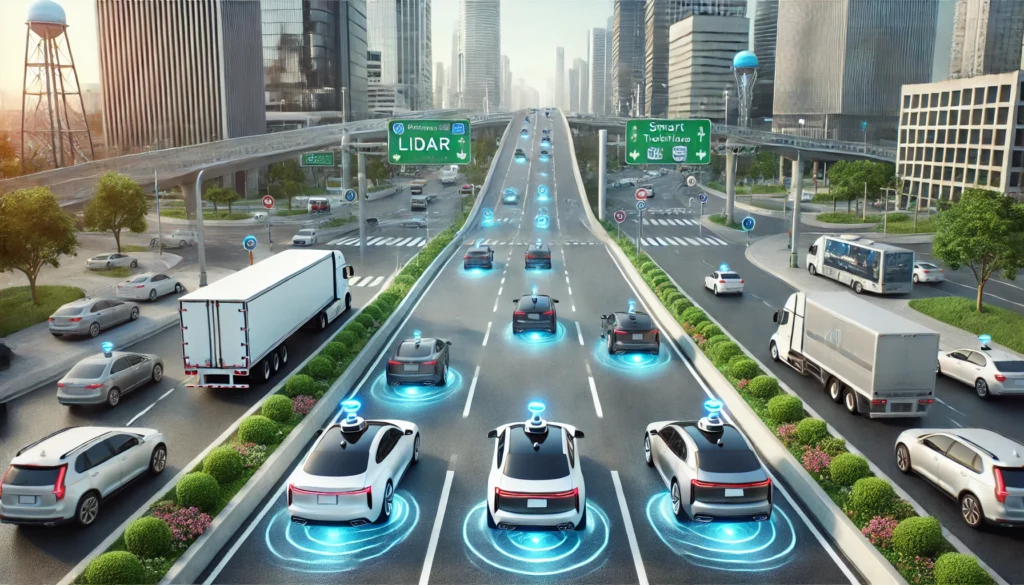Ads
Self-driving cars and trucks are no longer a distant vision from science fiction movies, but a tangible reality.
With impressive technological advances, these machines are revolutionizing transportation, promising greater safety, efficiency, and convenience. But how did we get here?
And what does the future hold? In this article, we'll explore the history, challenges, recent advancements, and next steps of this world-changing technology.
History and First Prototypes
The idea of a self-driving vehicle isn't as new as it seems. Since the beginning of the 20th century, engineers have dreamed of creating systems that could replace human driving.
In 1925, engineer Francis Houdina demonstrated the first radio-controlled “driverless car” on the streets of New York City.
Ads
Although rudimentary, this initiative paved the way for the development of modern autonomous cars.
In the 1980s, Carnegie Mellon University's Navlab Project brought the first significant advances.
These prototypes used cameras and sensors to navigate in controlled environments.
Another important milestone was the DARPA Grand Challenge program, which encouraged companies and universities to develop autonomous vehicles capable of navigating complex desert routes.
The First Tests and Initial Barriers
The first tests of autonomous vehicles were conducted in closed, controlled environments, such as university campuses and test tracks.
The main challenge at that time was the accuracy of the sensors and the ability to process data in real time.
Furthermore, the lack of infrastructure adapted to this technology hampered its large-scale adoption.
However, it was in the 2010s that we saw the first tests in real-life traffic conditions.
Companies like Google (now Waymo) and Tesla have begun testing self-driving cars on the road, using technologies like LiDAR, high-resolution cameras, and machine learning algorithms to interpret the surrounding environment.
The Current Reality of Autonomous Vehicles
Today, autonomous cars and trucks are a reality in various cities around the world.
Companies like Waymo, Tesla, Uber, and Mercedes-Benz lead the market, offering solutions ranging from semi-autonomous systems to fully autonomous vehicles.
In practice, this technology is already being used in sectors such as:
- Passenger Transport: Services like Waymo One, which operates fleets of self-driving cars in cities like Phoenix, in the United States.
- Logistics and Cargo: TuSimple's autonomous trucks are already traveling thousands of kilometers transporting goods.
- Test Vehicles: Cars with partial autopilot systems, such as Tesla's Autopilot, allow drivers to relax on stretches of highway.
Manufacturers and Cutting-Edge Technologies
Competition in this market is fierce, with several companies vying for leadership.
Here are some of the top manufacturers and their technologies:
- Waymo: A pioneer in the sector, it uses LiDAR technology to detect objects and create detailed maps of the environment.
- Tesla: Focused on accessible solutions, it employs cameras and ultrasonic sensors, along with advanced AI.
- Mercedes-Benz: It offers semi-autonomous systems in its luxury vehicles, such as Drive Pilot.
- Aurora Innovation: Specializing in systems for autonomous trucks, with a strong presence in the logistics sector.
Challenges and Next Steps
Although the progress is impressive, significant challenges remain. One of them is the issue of legislation, as many countries still lack clear standards for autonomous vehicles.
Furthermore, safety is a constant concern. Isolated cases of accidents involving autonomous vehicles have raised questions about the reliability of these systems.
Another crucial point is public acceptance. After all, many people are still uncomfortable with the idea of handing over control of their car to a machine.
To overcome these challenges, companies are investing in:
- Improved Security: Implementation of redundancies to avoid failures.
- Consumer Education: Campaigns to inform the public about the benefits and safety of the technology.
- Collaborations with Governments: Development of adapted infrastructure, such as smart traffic lights.

Impacts on Society and the Economy
The benefits of autonomous vehicles are undeniable. Among the most significant impacts, we can highlight:
- Accident Reduction: Studies suggest that up to 90% of traffic accidents could be avoided with autonomous cars.
- Less Congestion: Autonomous driving systems optimize traffic flow.
- Social Inclusion: People with disabilities or the elderly will benefit greatly from this technology.
- Transformation in the Labor Market: While it creates opportunities in high-tech sectors, it can also replace traditional jobs, such as driving.
Conclusion
The advent of self-driving cars and trucks is one of the greatest innovations of our time.
We are witnessing a revolution that promises to change the way we travel and transport goods.
However, this journey is still ongoing, full of challenges and opportunities. What do you think about this technology?
Would you be willing to take a ride in a self-driving car? Leave your comment and share your opinion!
Who knows, maybe you'll inspire others to reflect on this future that has already begun.